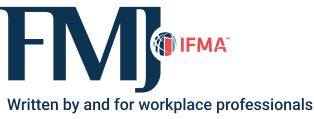Leading with Encouragement
A positive, productive approach

Leadership often defaults to a directive style rooted in oversight and discipline. Within the context of facility management, the complexity of managing buildings — with responsibilities spanning maintenance, safety, efficiency and regulatory compliance — can make micromanagement seem like a necessity. However, an increasingly effective and constructive leadership approach is gaining traction: leading with encouragement.
Encouragement is a leadership tool that promotes a positive environment, improves morale and motivates team members to perform at their best. In the demanding context of facilities operations, wherein performance pressures are constant, adopting an encouragement-driven management style can foster a more engaged, collaborative and high-performing workforce.
Empowering teams through trust
Encouragement begins with trust. When team members are trusted to carry out their responsibilities independently, it cultivates a sense of ownership and accountability. Rather than closely monitoring each task, effective leaders provide guidance, training and support, enabling personnel to make decisions and solve problems autonomously.
This trust-driven autonomy contributes to greater initiative and innovation, ultimately enhancing the performance and adaptability of the team. It also helps streamline operations by reducing bottlenecks associated with micromanagement.
Trust has a measurable impact on workplace dynamics. A 2023 survey by the Society for Human Resource Management (SHRM) found that employees who strongly agree that they are trusted by their supervisors are 30 percent more likely to go above and beyond their job responsibilities. In FM, where proactive thinking is essential, this statistic translates directly into operational efficiency.
Promoting a positive workplace culture
An FM team that feels valued is more likely to operate with motivation and consistency. Encouragement includes regular recognition of effort and achievement — whether in completing maintenance work, improving sustainability practices or upholding safety standards.
Reinforcing positive behaviors with timely acknowledgment strengthens the work culture. It creates a feedback loop in which appreciation drives performance, and performance attracts further recognition, supporting a culture of continuous improvement.
According to a Deloitte report, organizations with a strong recognition culture are 12 times more likely to achieve strong business outcomes. In FM operations, this might mean fewer maintenance delays, reduced equipment downtime or increased adherence to safety protocols.
Adopting a solution-oriented mindset
Unexpected challenges are part of the facilities landscape. Rather than emphasizing errors or setbacks, an encouragement-based approach reframes obstacles as opportunities for learning and improvement. Leaders who ask, “What can be learned from this situation?” foster a culture centered on problem-solving and resilience.
This shift not only mitigates stress and fear of failure but also improves the team’s ability to generate creative and efficient solutions, resulting in more agile and responsive facilities operations.
It also empowers staff to participate in continuous improvement. When facility teams are encouraged to suggest process changes or improvements, they are more likely to identify cost-saving opportunities or optimize workflows in ways that may not be visible from leadership levels alone.
Enhancing morale & retention
Workplaces that rely heavily on criticism and control often experience lower morale and higher turnover. In contrast, environments that prioritize encouragement, development and supportive feedback tend to see higher job satisfaction.
Facilities teams led with positivity report greater engagement and are more likely to remain committed to the organization. Reduced turnover minimizes disruptions in operations and lowers the costs associated with recruiting and training new personnel.
For example, research from the Harvard Business Review shows that engaged employees are 87 percent less likely to leave their organization. In FM, where institutional knowledge is key, retaining skilled personnel reduces onboarding time and helps preserve operational continuity.
Strengthening communication
Encouragement also promotes open communication. Constructive dialogue around improvements, innovation and individual growth strengthens trust between leadership and staff. Leaders who focus on possibilities instead of deficiencies help team members feel heard, respected and empowered to contribute ideas.
Clear and respectful communication leads to quicker issue resolution, smoother coordination and a more cohesive operational environment.
FM operations often involve cross-departmental coordination. When encouragement shapes the communication culture, collaboration improves not only within teams but also between facilities and other departments such as procurement, human resources and compliance.
Delivering better outcomes with less stress
FM professionals who work in supportive environments tend to experience lower stress levels. When mistakes are treated as learning experiences rather than causes for reprimand, employees feel more confident and focused on delivering results.
This approach not only improves mental well-being and job satisfaction, but also translates to improved service quality, reduced downtime and stronger overall facility performance.
Workplace stress continues to be a significant factor in absenteeism and burnout. A study from the World Health Organization found that supportive leadership practices can reduce stress-related absences by up to 25 percent. For FMs dealing with tight schedules and urgent requests, this can mean greater workforce availability and efficiency.
Case study: Encouragement in action
At a large charter school network in the southwestern United States, leadership embraced an encouragement-based model of facilities management over a 16-year period. With a team of 42 employees — 28 men and 14 women — the assistant director of facilities implemented strategies focused on trust, open communication and recognition of achievements.
During this time, only three staff members left: two for retirement and one due to relocation. This extremely low turnover enabled the organization to maintain a high level of operational consistency, safety compliance and cost control.
By fostering a workplace culture rooted in encouragement and empowerment, the facilities team achieved high productivity with minimal conflict. Staff reported feeling valued and supported, contributing to a collaborative environment where team members routinely went beyond their core responsibilities.
Comparing leadership styles in facilities
|
Leadership Style |
Characteristics |
Outcomes |
|
Directive/micromanaging |
Close supervision, |
Low engagement, |
|
Encouragement-based |
Trust-focused, |
High morale, |
While directive leadership may be effective in urgent or crisis scenarios, long-term reliance on micromanagement often erodes trust. Encouragement-based leadership, by contrast, builds loyalty, fosters initiative and supports sustainable success across facilities teams.
Integrating encouragement-based leadership into daily operations
Transitioning to an encouragement-driven leadership style involves deliberate action. The following strategies offer a practical starting point:
-
Start with trust: Delegate tasks with clear expectations and avoid unnecessary oversight.
-
Recognize contributions regularly: Offer verbal praise, handwritten notes or team shoutouts to acknowledge efforts.
-
Encourage feedback: Create a safe space for staff to offer suggestions and share concerns.
-
Focus on development: Offer mentorship, training or growth pathways within the team.
-
Lead by example: Demonstrate positivity, resilience and openness in daily interactions.
Small, consistent actions help shift the team culture toward encouragement. Over time, this investment yields improvements in both performance and retention.
Encouragement as a strategic leadership tool
Encouragement is more than a motivational tactic — it is a strategic approach to facilities leadership that enhances team performance, communication and workplace culture. By focusing on trust, recognition, autonomy and development, organizations can build teams that are more engaged, efficient and resilient.
As FMs adapt to increasingly complex demands, whether through energy management, compliance or digital transformation, those who lead with encouragement position their teams and organizations for long-term success.

Corrine Gonzales is the owner and operator of Permit Solutions, a firm focused on navigating facilities compliance and permitting. She previously served 16 years as assistant director of facilities for the largest public charter school system in the U.S. In this position, she managed day-to-day operations and directly supervised a team of 42 employees. Her leadership approach contributed to remarkably low staff turnover, with only three employees departing over the years — two through retirement and one due to relocation.
Read more on Leadership & Strategy , Occupancy & Human Factors and Performance & Quality or related topics Communication Management , Relationship and Conflict Management and Staffing
Explore All FMJ Topics









